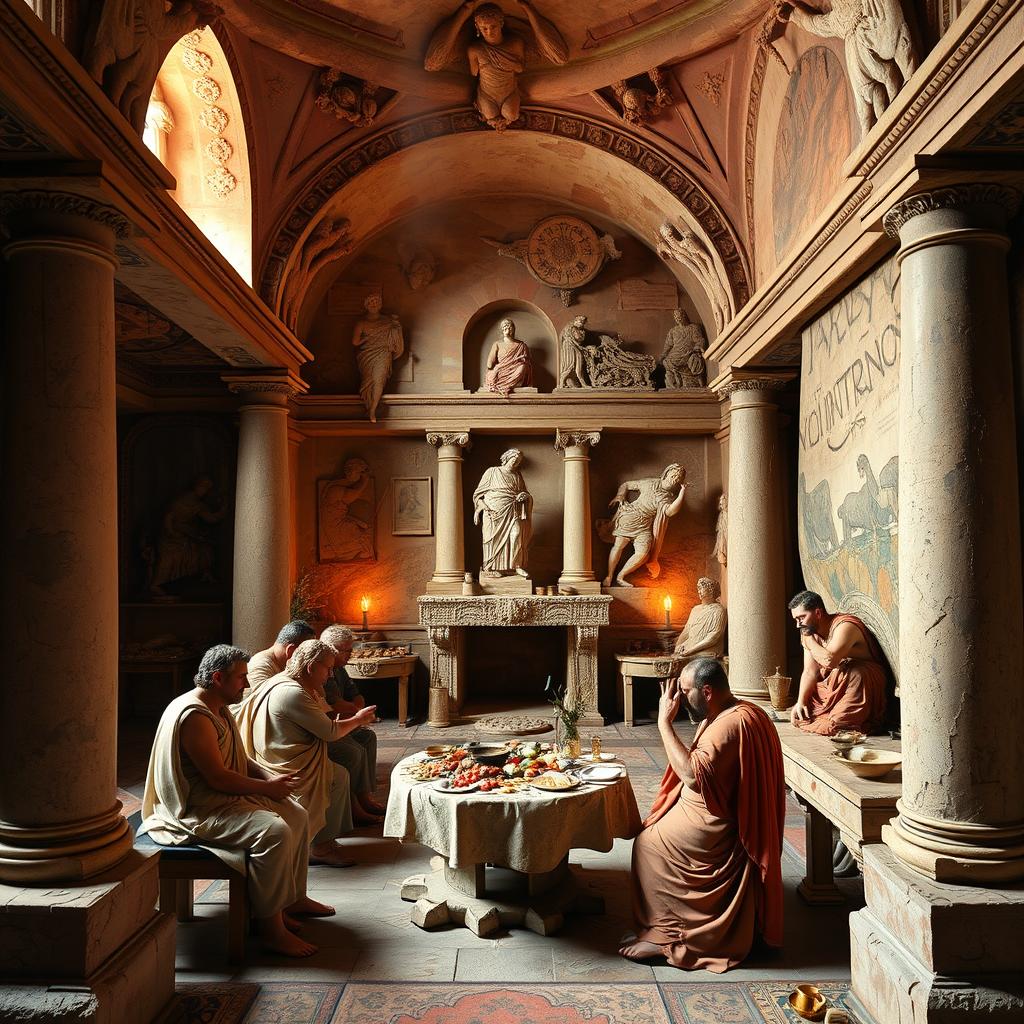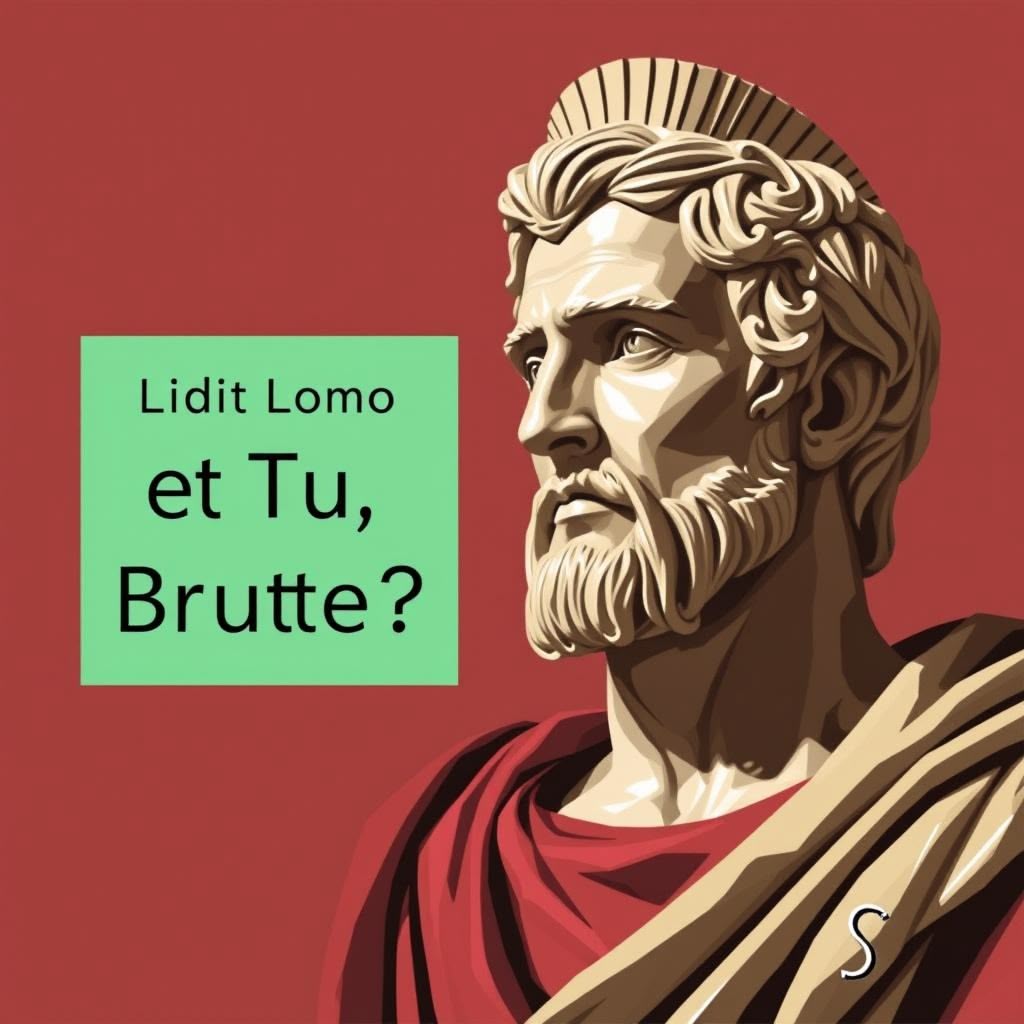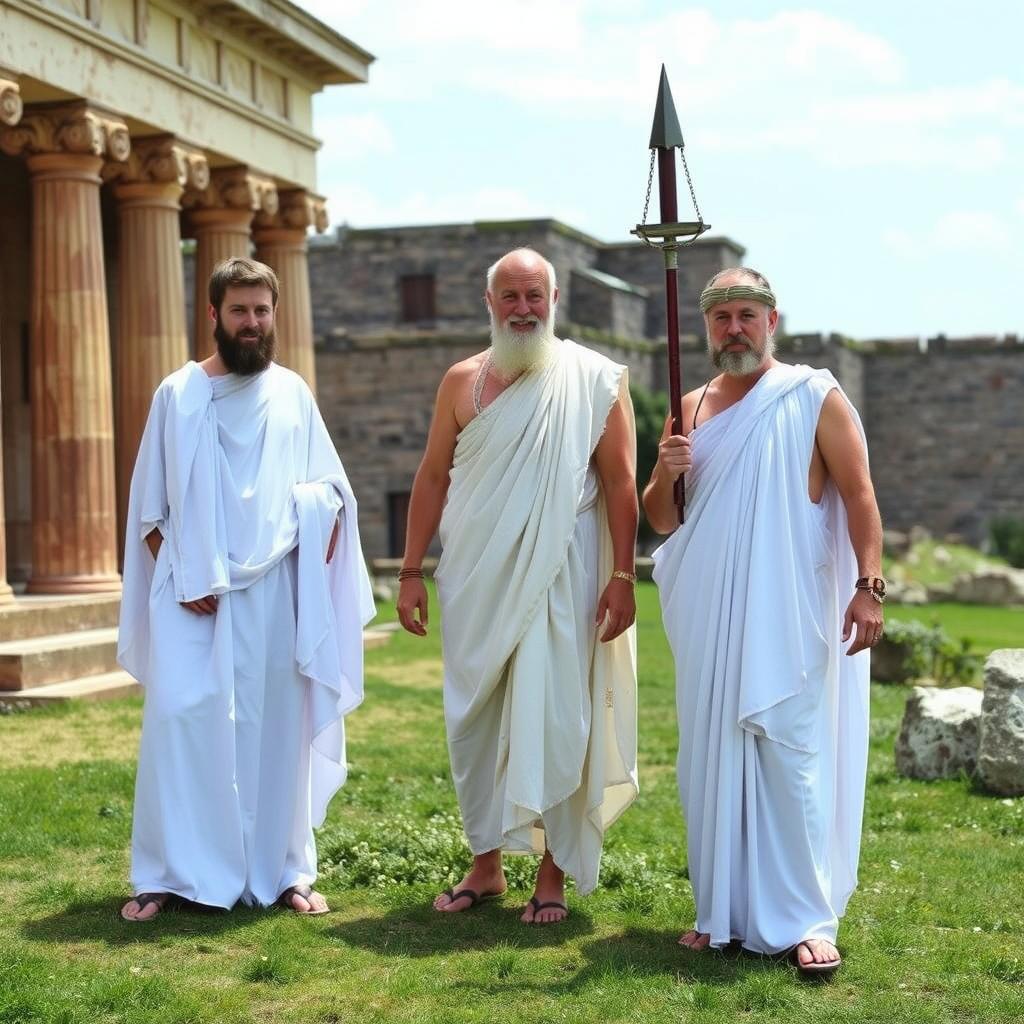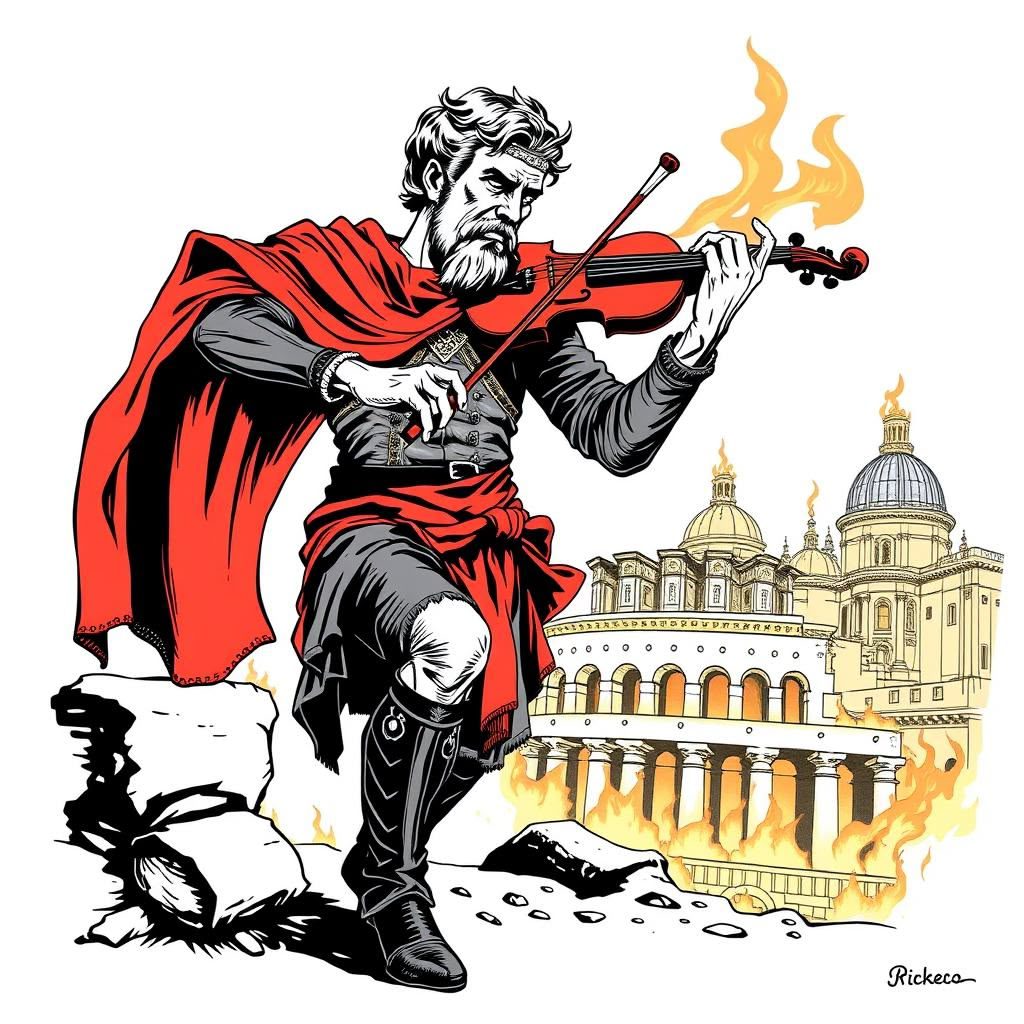History books rarely capture the full truth. Like whispers in a crowded forum, stories transform as they travel through time, picking up embellishments and losing critical details. Ancient Rome—with its gladiators, emperors, and world-changing innovations—has suffered this fate more than most civilizations. What we think we know about this influential empire often bears little resemblance to historical reality.
The myths we’ve embraced about Roman civilization don’t merely represent harmless historical footnotes; they fundamentally distort our understanding of one of history’s most influential societies. These misconceptions shape our movies, books, and conversations, creating a version of Rome that never existed—a fantasy realm where gladiators received thumbs-down death sentences and emperors fiddled while their capital burned.
The truth about Roman civilization proves far more fascinating than the fiction. By examining what actually happened, rather than what Hollywood directors and misinformed history teachers have told us, we gain insight into a culture whose influence continues to shape our laws, language, and architecture. The real Rome—complex, contradictory, and deeply human—offers more valuable lessons than its mythologized counterpart ever could.
Myth #1: Thumbs Down Meant Death in the Gladiatorial Arena

Picture the scene: a defeated gladiator lies in the dust, looking up at the emperor who raises his hand, thumb extended. The crowd roars. Will the thumb point up or down? In countless films, novels, and even history textbooks, we’ve been told that thumbs down meant death, while thumbs up signaled mercy.
The historical evidence reveals something entirely different. The primary Roman source on this gesture comes from Juvenal’s Satires, where he describes the crowd turning their thumbs to signal a gladiator’s fate. The Latin phrase he uses—”pollice verso”—literally means “with turned thumb.” Nowhere does he specify the direction. More tellingly, some evidence suggests that the actual signal for death may have been a thumb pointed horizontally toward the chest (mimicking a sword thrust), while a hidden thumb (tucked into a closed fist) signaled mercy.
This misinterpretation gained permanent cultural traction largely through Jean-Léon Gérôme’s 1872 painting “Pollice Verso,” which dramatically depicted spectators with thumbs pointed downward. The painting so captivated audiences that its interpretation became historical “fact.” Filmmaker Ridley Scott even cited this painting as direct inspiration for scenes in “Gladiator,” further cementing the myth in popular consciousness.
Understanding this distinction matters beyond mere historical curiosity. The real gesture reflects the Roman preoccupation with clear, practical communication in matters of life and death—a culture where symbolic gestures carried precise meanings in their militaristic society.
Myth #2: Vomitoriums Were Rooms Where Romans Vomited During Feasts

The image persists in popular imagination: decadent Romans gorging themselves at elaborate feasts, then retiring to special rooms—vomitoriums—to purge so they could return and eat more. This portrayal of Roman excess makes for compelling storytelling, but completely misrepresents architectural terminology.
Vomitoriums had nothing to do with Roman dining habits. The term actually referred to the entrances and exits in amphitheaters and stadiums designed to “disgorge” or “vomit forth” large crowds quickly. These architectural features were remarkable feats of design that allowed venues like the Colosseum to fill or empty thousands of spectators with extraordinary efficiency. Some ancient venues could empty completely in as little as 15 minutes—a testament to Roman engineering prowess rather than their supposed gluttony.
The confusion likely stems from accounts of excessive feasting among certain wealthy Romans, some of whom might indeed have induced vomiting to continue eating. However, this practice (if it occurred at all) was never institutionalized with dedicated rooms, nor was it widely accepted behavior. Most Romans, including the elite, would have considered such behavior shameful rather than sophisticated.
This correction illuminates something far more interesting about Roman society: their remarkable skill in crowd management and public infrastructure. The Romans understood how to move masses of people safely and efficiently—knowledge that modern stadium designers still apply today. Their legacy lives not in imagined rooms of excess, but in the practical innovations that made public entertainment accessible to unprecedented numbers of citizens.
Myth #3: Julius Caesar’s Last Words Were “Et Tu, Brute?”

The assassination of Julius Caesar ranks among history’s most infamous political murders. As daggers plunged into him, Shakespeare has Caesar gasp, “Et tu, Brute?”—”You too, Brutus?”—a phrase that has become synonymous with the ultimate betrayal. The dramatic moment makes for powerful theater, but it almost certainly never happened.
Contemporary Roman historians tell a different story. According to Suetonius, Caesar either said nothing at all or, upon seeing Brutus among his attackers, spoke the Greek phrase “καὶ σύ, τέκνον” (kai su, teknon)—”You too, my child?” Plutarch, another ancient source, suggests Caesar died without speaking any final words, overwhelmed by the sudden attack of dozens of senators. Notably, no ancient source records the Latin phrase “Et tu, Brute?” that Shakespeare would immortalize over 1,600 years later.
The literary invention serves Shakespeare’s dramatic purposes perfectly, creating a moment of recognition and betrayal that resonates with audiences. However, it reflects Tudor-era sensibilities about honor and betrayal more than Roman historical reality. Shakespeare, writing for Elizabethan audiences rather than historical accuracy, crafted a moment that would resonate emotionally, regardless of its factual basis.
The truth behind Caesar’s assassination reveals something more profound about Roman politics than a single dramatic line could convey. The conspiracy against him involved dozens of Rome’s elite, not just a treacherous friend, reflecting deep institutional resistance to Caesar’s accumulation of power. His death marked not simply personal betrayal but a constitutional crisis that would transform the Republic into an Empire—a complexity that extends far beyond memorable last words.
Myth #4: Romans Wore White Togas for Everyday Attire

Marble statues and Hollywood epics have convinced us that Romans went about their daily lives draped in pristine white togas. This oversimplification distorts both Roman fashion and social structure, reducing a complex sartorial system to a simplistic uniform.
The toga was indeed an important garment, but it was never everyday wear for most Romans. Cumbersome, expensive, and difficult to keep clean, the toga functioned more like today’s formal business suit than casual attire. Most Romans wore simpler tunics for daily activities. Laborers, who constituted the majority of the population, found the toga impractical for physical work. Even wealthy citizens complained about its inconvenience, with the poet Martial calling it a “troublesome burden.”
Furthermore, togas weren’t uniformly white. While the basic toga (toga virilis) was undyed wool, various types existed for different social stations and occasions. Magistrates wore the toga praetexta with a purple border. Generals celebrating triumphs wore the solid purple toga picta. Mourners wore darkened togas (toga pulla), while candidates for office wore artificially whitened togas (toga candida—the root of our word “candidate”).
This misunderstanding matters because it flattens a society that used clothing to communicate complex social distinctions. Roman dress operated as a visual language, instantly identifying someone’s age, gender, class, profession, and current role in society. By appreciating this system, we gain insight into a culture that, despite its familiarity, operated on fundamentally different social principles than our own. The Romans weren’t merely people in white sheets—they were participants in an elaborate visual communication system that reinforced their highly stratified society.
Myth #5: Nero Fiddled While Rome Burned

The image of Emperor Nero playing his fiddle as flames consumed Rome in 64 CE has become shorthand for callous leadership during crisis. This vivid picture has only one problem: fiddles (violin-type instruments) didn’t exist in first-century Rome.
Contemporary accounts from historians like Tacitus and Suetonius present conflicting versions of Nero’s actions during the catastrophic fire. Tacitus notes that Nero was actually in Antium (modern Anzio), about 35 miles away, when the fire began. Upon hearing news of the disaster, he returned to Rome and opened public buildings and his own gardens to shelter those displaced by the flames. He personally participated in relief efforts and implemented new building regulations requiring wider streets and fire-resistant materials.
The less flattering versions suggest Nero may have sung or played the lyre (a stringed instrument of ancient Greece) while watching the fire—but even these accounts are written by historians with clear anti-Nero biases. Suetonius, writing fifty years after the events and under a dynasty that had overthrown Nero’s, had political reasons to portray the emperor in the worst possible light.
The myth gained traction because it aligned with Nero’s reputation for artistic pretensions and alleged indifference to suffering. The evolution from “Nero played the lyre” to “Nero fiddled” occurred during the Middle Ages, when chroniclers substituted the anachronistic fiddle for the unfamiliar lyre, creating the version we know today.
This misrepresentation obscures the complex reality of Nero’s reign and Rome’s first urban disaster planning. While certainly no model ruler, Nero’s response to the Great Fire actually established precedents for emergency response and urban planning that would influence city design for centuries. The real story offers more nuance about leadership during crisis than the simplified moral tale that has persisted for two millennia.
Myth #6: Romans Used Lead Pipes and Dishes, Leading to Empire-Wide Lead Poisoning

A persistent theory suggests that the Roman Empire collapsed partly because its citizens suffered from chronic lead poisoning from their elaborate water systems and lead-containing vessels. This theory has been repeated so often it has achieved the status of conventional wisdom, supposedly explaining everything from emperors’ erratic behavior to declining birth rates.
The evidence doesn’t support such sweeping conclusions. While Romans did use lead in water pipes (plumbing gets its name from the Latin “plumbum” for lead) and some cooking vessels, the actual exposure was likely far less dangerous than commonly portrayed. Roman water systems typically developed protective mineral deposits inside pipes, reducing contact between water and lead. Additionally, the constant flow of fresh water limited contamination compared to standing water.
Archaeological studies of Roman skeletal remains show lead levels that, while higher than in pre-industrial populations, weren’t catastrophically elevated. Isotope analysis of bones indicates most Romans experienced lead exposure comparable to people in the early 20th century—concerning by modern standards but not civilization-threatening.
The wealthy actually faced greater risks than the common people, as elite Romans consumed grape-based products like defrutum (a grape syrup reduction) that was sometimes prepared in lead vessels. The general population drank primarily fresh water and wine that hadn’t undergone such processing. This nuance contradicts the notion of empire-wide poisoning.
This myth persists partly because it offers a simple, scientifically-sounding explanation for complex historical processes like Rome’s decline. The reality—that civilizations typically fall due to multiple interconnected political, economic, and environmental factors—provides fewer satisfying narratives but greater historical accuracy. Rome’s engineering achievements, including its water systems, were actually among its most enduring successes rather than causes of its downfall.
Myth #7: Romans Maintained Poor Hygiene Compared to Modern Standards
The mistaken belief that ancient Romans lived in filthy conditions with minimal personal hygiene persists in popular imagination, often conflated with medieval European practices that came centuries later. This misconception not only misrepresents Roman culture but obscures one of their most significant social innovations.
Romans placed extraordinary emphasis on cleanliness and bathing. Public baths (thermae) existed in every city and town across the empire, serving as centers for hygiene, socialization, and recreation. Even modest towns maintained public facilities that would impress modern visitors, with heated pools, exercise yards, libraries, and social spaces. The Baths of Caracalla in Rome could accommodate 1,600 bathers simultaneously, featuring heated floors, massive swimming pools, and sophisticated water management systems.
Most Romans bathed daily when facilities were available. The ritual typically involved progressively warmer rooms (tepidarium, caldarium), followed by a cold plunge (frigidarium)—a practice not dissimilar to modern spa treatments. They used olive oil rather than soap, scraping it off with a curved tool called a strigil, effectively removing dirt and dead skin.
Roman homes with sufficient wealth included private baths, while even modest urban apartments typically had access to clean running water through public fountains. Archaeological evidence from Pompeii and Herculaneum reveals households with sophisticated toilets and drainage systems.
The collapse of Roman infrastructure during the early medieval period actually represented a significant regression in European hygiene practices. The elaborate bathing culture and public sanitation systems disappeared for centuries until the late Middle Ages and Renaissance began to recover this knowledge.
Understanding the true nature of Roman hygiene practices reveals a society that, in some ways, maintained cleanliness standards comparable to or exceeding those of Europe until the 19th century. Their sophisticated approach to public health through infrastructure represents one of their most significant, if underappreciated, contributions to urban civilization.
Why These Myths Matter and What They Reveal
The persistence of these Roman myths isn’t merely a matter of historical curiosity—it reveals something profound about our relationship with the past. We shape our understanding of ancient civilizations to fit our preconceptions, often projecting modern concerns backward rather than engaging with the actual evidence.
When we imagine Romans giving thumbs-down death sentences or fiddling while their city burns, we’re not just making factual errors. We’re constructing a version of antiquity that serves our desire for simplified moral lessons or confirms our biases about human nature. This tendency to mythologize reveals more about our psychology than about Roman history.
The accurate history of Rome offers something far more valuable than these simplistic myths. It shows us a society wrestling with challenges that remain familiar today: maintaining public infrastructure, integrating diverse populations, balancing political stability with personal freedom, and developing technologies that improved daily life. Their solutions were sometimes brilliant, sometimes horrifying, but consistently human in their complexity.
By correcting these misconceptions, we gain access to the actual wisdom and warnings of Roman civilization. Their sophisticated approaches to urban planning, public health, and governance offer insights that remain relevant today. Meanwhile, their struggles with wealth inequality, political corruption, and imperial overreach provide cautionary lessons about governance and power that lose their impact when obscured by myth.
Seeing Romans as they were—neither superhuman paragons nor primitive caricatures—allows us to recognize both their remarkable achievements and their disastrous failings. This balanced understanding provides far more valuable perspectives than the myths that have accumulated over centuries.
Embracing Historical Reality
Dismantling these popular myths doesn’t diminish Rome’s significance—it enhances it. The real Roman civilization, with its complex social structures, technological innovations, and sophisticated cultural practices, offers far more valuable insights than its mythologized version.
Historical accuracy matters not because we should worship the past, but because understanding what actually happened helps us contextualize our own society. Many features we consider uniquely modern—from urban planning and public health initiatives to complex financial systems and multicultural populations—have Roman precedents. Likewise, many challenges we face today—political polarization, economic inequality, balancing security and liberty—were familiar to Roman citizens.
The next time you encounter a familiar claim about Roman civilization, consider questioning it. Was it based on primary historical evidence or accumulated popular imagination? Does it reflect what Romans actually wrote about themselves, or what later societies projected onto them?
Join our community of history enthusiasts committed to uncovering the authentic past. Subscribe to our newsletter for weekly insights that challenge conventional wisdom about ancient civilizations and reveal the fascinating complexity of historical truth. Each edition explores overlooked aspects of history that contradict popular narratives, providing context that deepens your understanding of how past societies actually functioned.
The real Roman story—stripped of myths and misconceptions—offers wisdom that has survived twenty centuries. By engaging with historical reality rather than comfortable fiction, we honor their legacy and extract its most valuable lessons for today’s world.

